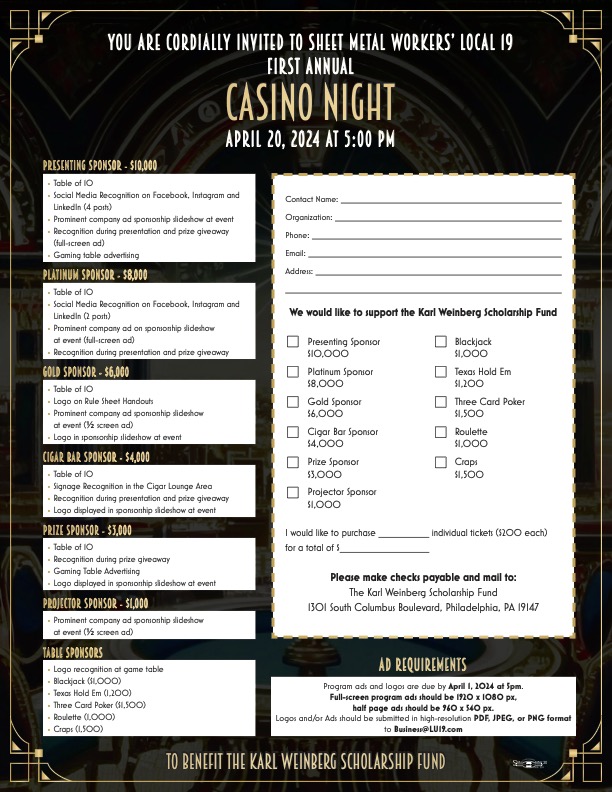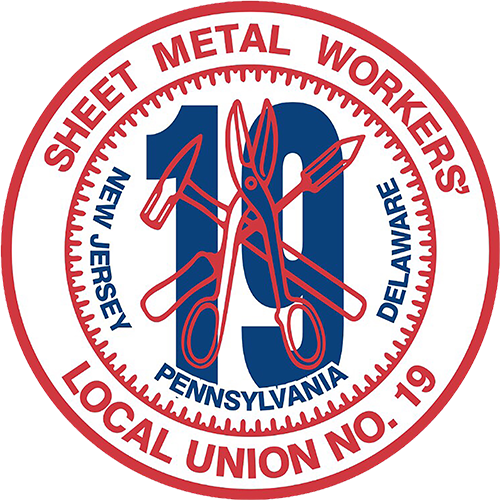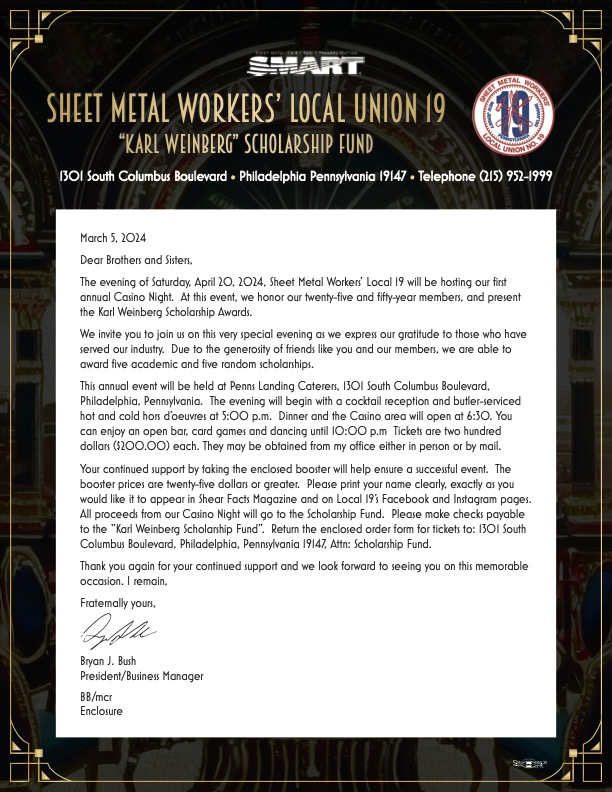Sheet Metal Workers’ Local 19 is hosting our Dinner Dance + Casino Night to honor our twenty-five and fifty-year members and present the Karl Weinberg Scholarship Awards on Saturday, April 20th. We’re so excited for a night of great food, great company, dancing and casino games.
Tickets and sponsorship opportunities are still available, and we have 11 different sponsorship levels to choose from, in addition to individual tickets and half tables. All proceeds from our Casino Night will go to the Scholarship Fund. Because of your generosity, we’re able to award five academic and five random scholarships this year. Your support will allow us to continue to award more scholarships for years to come.
Casino Night
April 20, 2024
Penns Landing Caterers
1301 South Columbus Boulevard
Philadelphia, Pennsylvania
5:00 PM cocktails and hors d’oeuvres
6:30 PM dinner
Open bar, card games, dancing until 10:00 PM
Tickets: $200 each
Obtain from business office or by mail
215-952-1999 ext. 2
Tickets and sponsorships can be purchased through mail, by email or in-person at the business office. Please feel free to contact Kelly at the business office at BUSINESS@LU19.com or 215-952-1999 to secure your sponsorship.
Thank you again for your continued support and we look forward to seeing you on what will be an exciting night.
Please make checks payable to the “Karl Weinberg Scholarship Fund. Return the enclosed order form for tickets, including your ad and logo as soon as possible to: 1301 South Columbus Boulevard, Philadelphia, Pennsylvania 19147, Attn: Scholarship Fund or to business@LU19.com

Ad Requirements
Program ads and logos are due by April 12, 2024 at 5pm.
Full-screen program ads should be 1920×1080 px, half page ads should be 960×540 px.
Logos and/or Ads should be submitted in high-resolution PDF, JPEG, or PNG format to business@LU19.com


